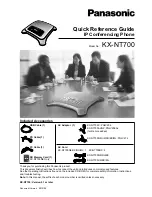
Cyber Security
Overview
Cyber security is designed to protect SWT 3000 devices against common IT security threats and to minimize
the impact of these threats on system operations. If SWT 3000 devices are under network attack, no device
reset and telecommunication interruption should occur.
Table 2-26
List of Communication Protocols of SWT 3000 Service Interface
Service
Layer 4
Protocol
Layer 7
Protocol
Client
Client Port
Server
Server Port
Web Server
TCP
HTTP
Web browser >1024
SWT 3000
80
Web Server with SSL
Encryption
TCP/TLS
HTTPS
Web browser >1024
SWT 3000
443
Time Synchroniza-
tion
UDP
NTP
SWT 3000
>1024
NTP Server
123
DHCP Client
UDP
DHCP
SWT 3000
68
DHCP Server 67
SNMP
UDP
SNMP
NMS
>1024
SWT 3000
161
SNMP Trap/Inform
UDP
SNMP
SWT 3000
161
SNMP Trap
Receiver
162
SNMP Inform
Acknowledge
UDP
SNMP
SNMP Trap
Receiver
162
SWT 3000
161
SWT 3000 Configu-
ration
TCP
PowerSys
Protocol
(Proprietary)
PowerSys
>1024
SWT 3000
10001
SWT 3000 Configu-
ration with SSL
Encryption
TCP/TLS
PowerSys
Protocol
(Proprietary)
PowerSys
>1024
SWT 3000
10001
i
i
NOTE
The communication protocols of SWT 3000 are disabled in the default configuration of PowerSys.
•
HTTP (80)
•
HTTPS (443)
•
SNMP (161)
Certification
Each device creates a self-signed certificate which has to be trusted on all clients used to access this device.
The IP addresses of both service port and user port are part of this certificate. Therefore, create the certificate
once again after the IP address is changed. Otherwise, a certificate warning message is shown with an IP
address mismatch in the Web browser.
[sccreatc-080513-01.tif, 1, en_US]
Figure 2-30
Parameter: Create Certificate
The certificate creation is done via the device web page: PowerLink > Service Interface Settings or SWT
3000 > Ethernet Interface Settings.
2.13
2.13.1
2.13.2
Functional Description
2.13 Cyber Security
88
Smart Communication, SWT 3000 Teleprotection, Equipment Manual
C53000-G6040-C605-1, Edition 03.2020
















































